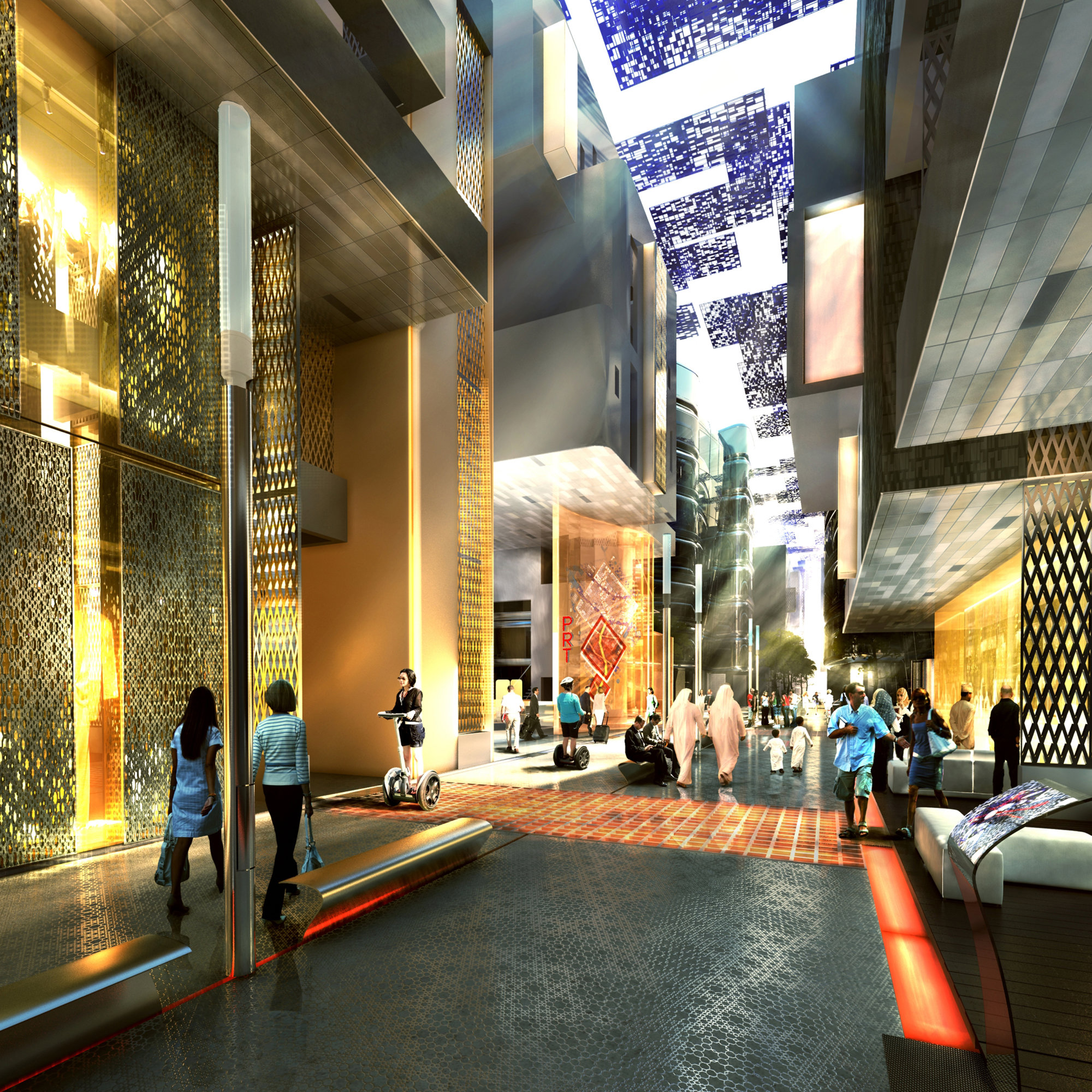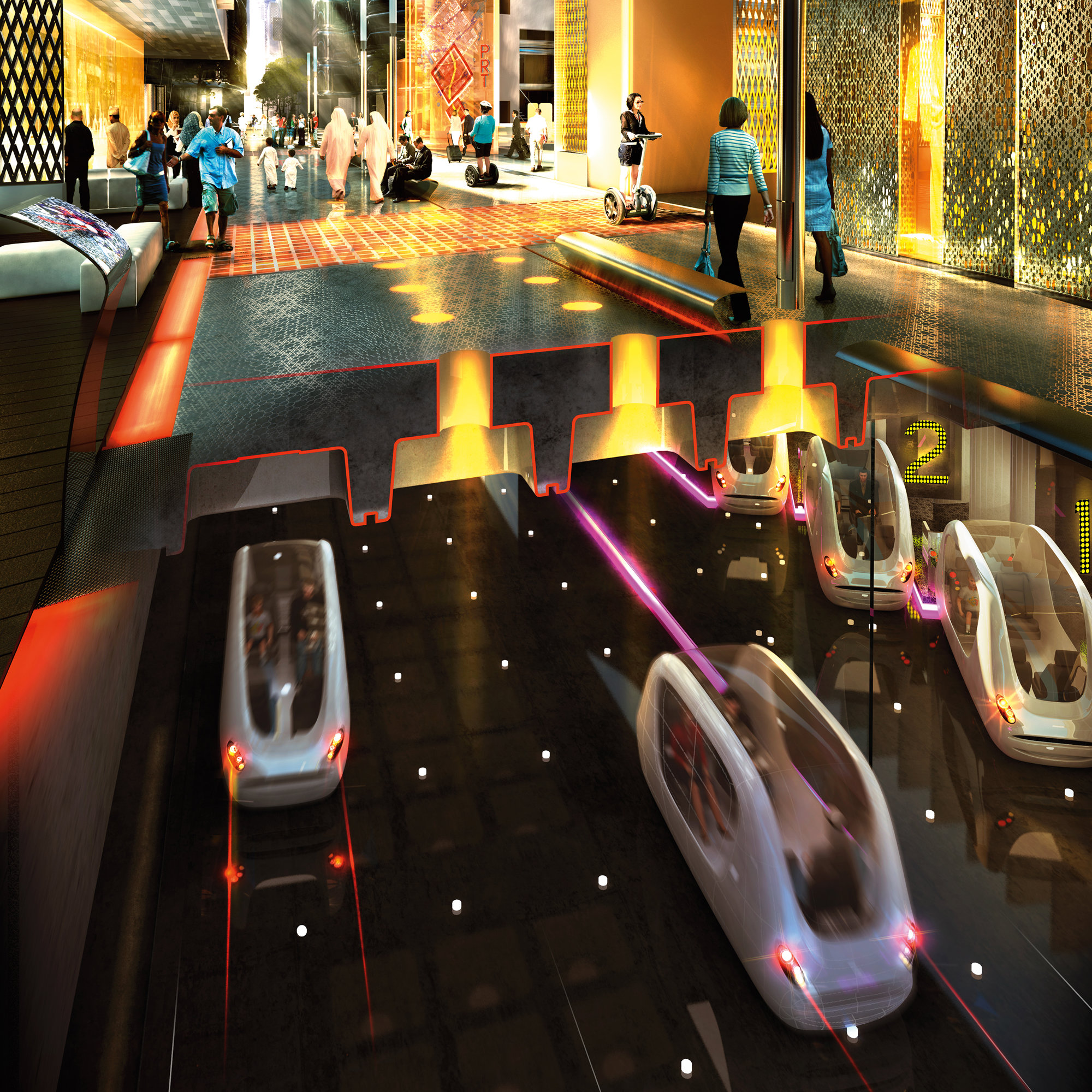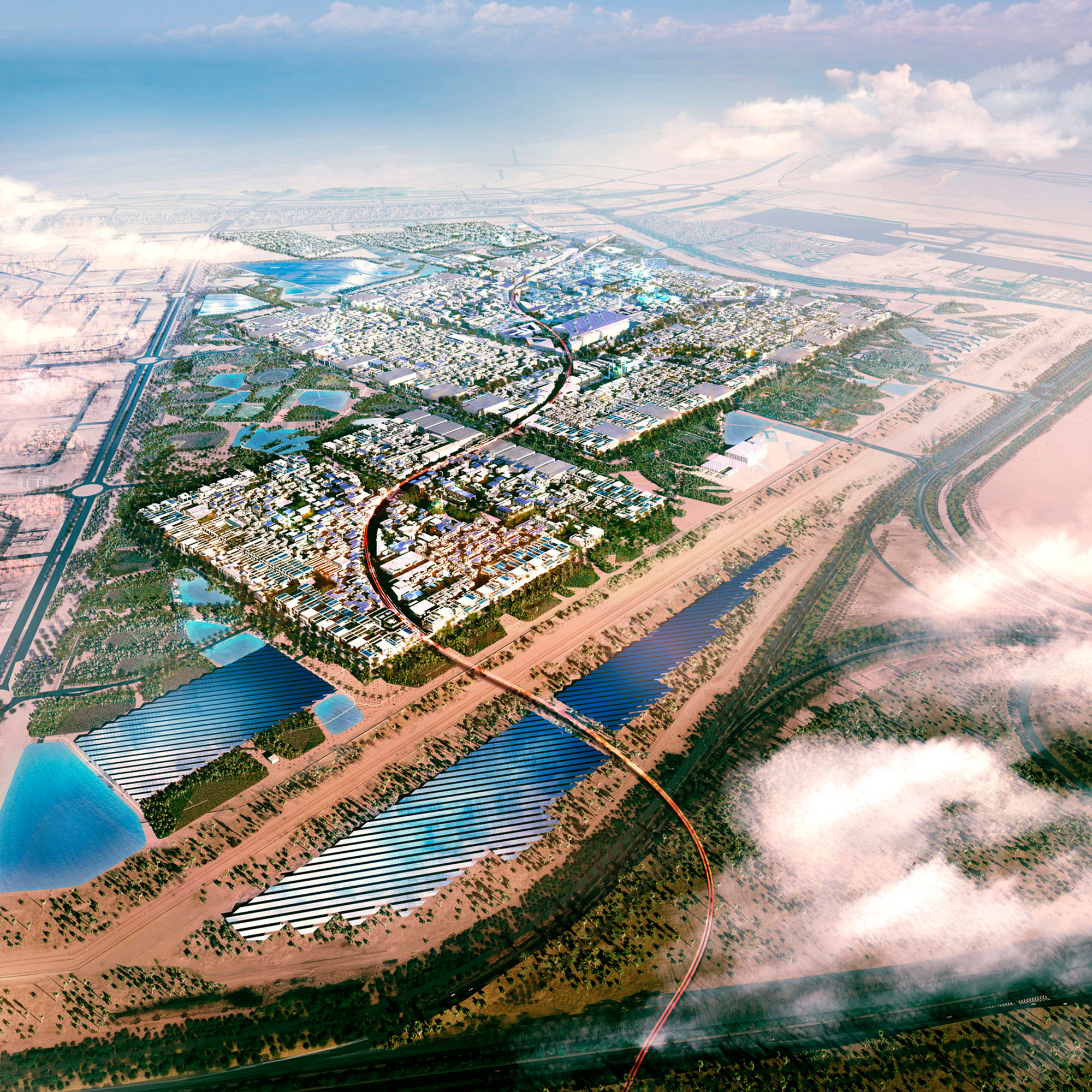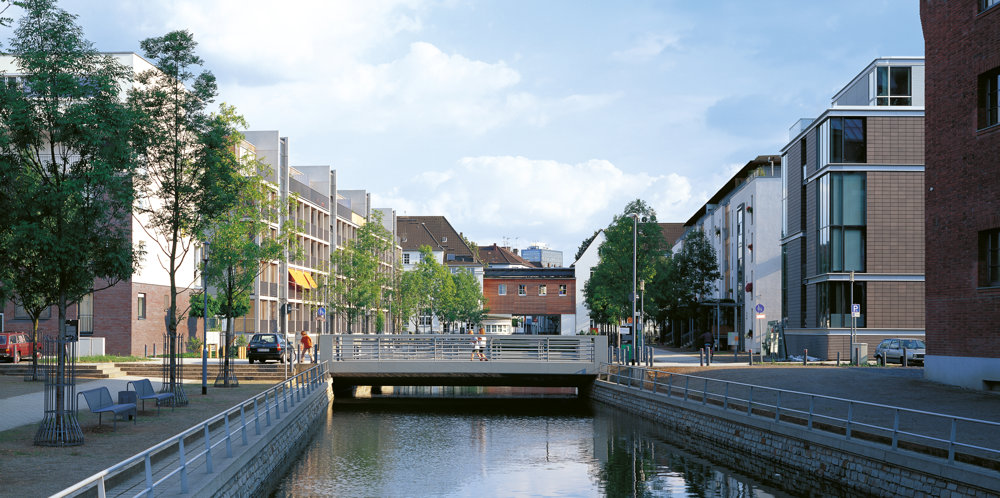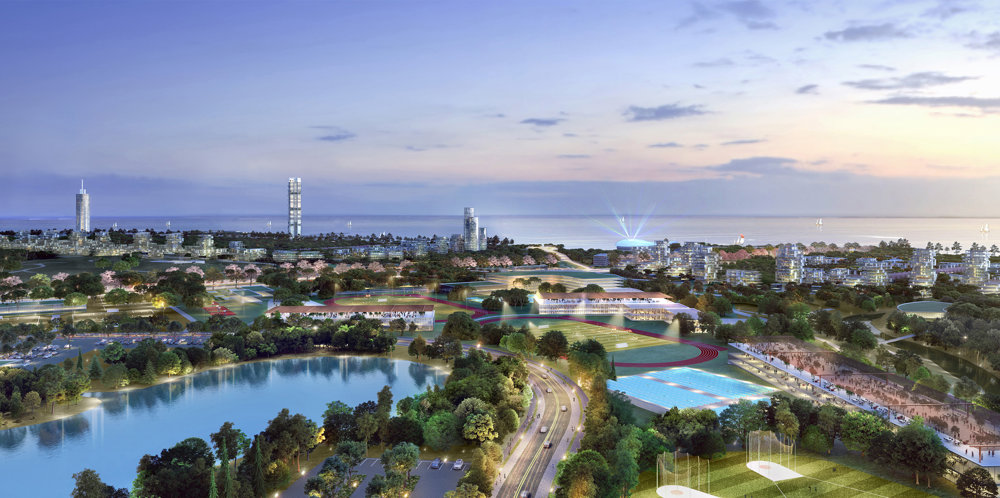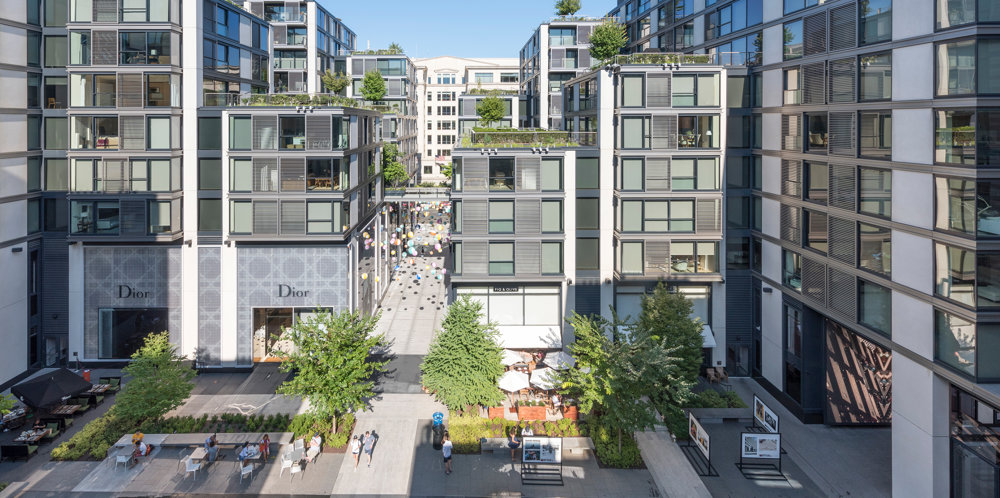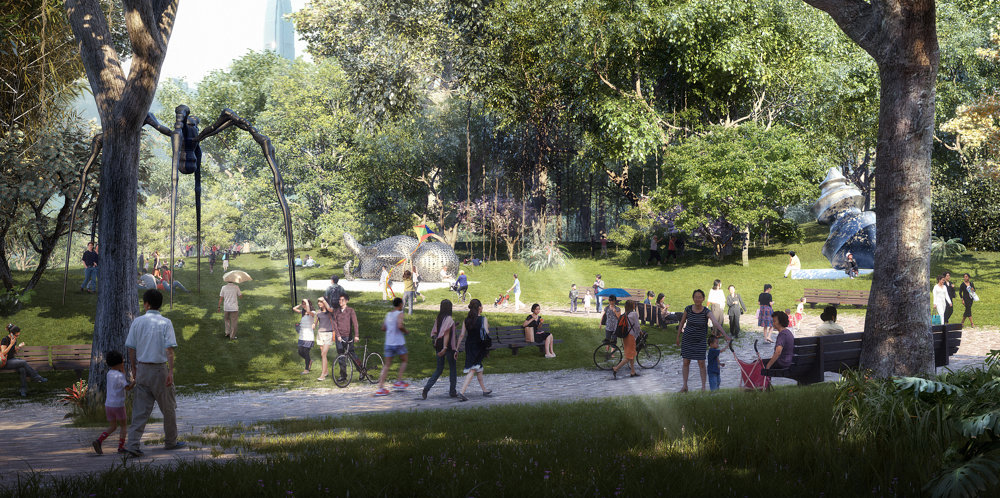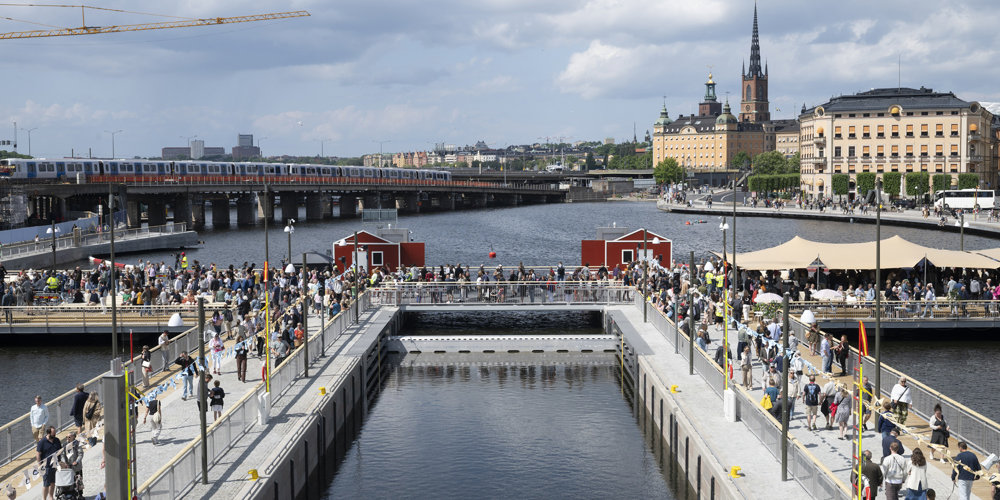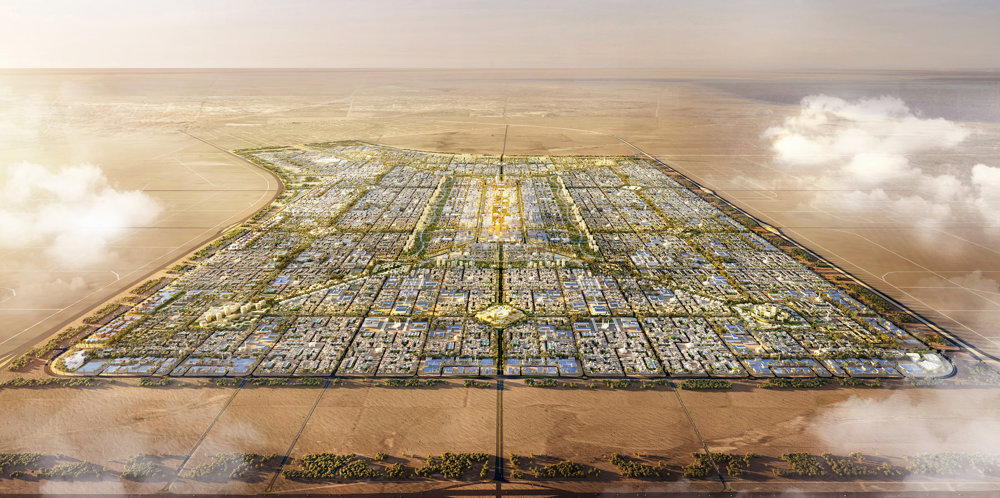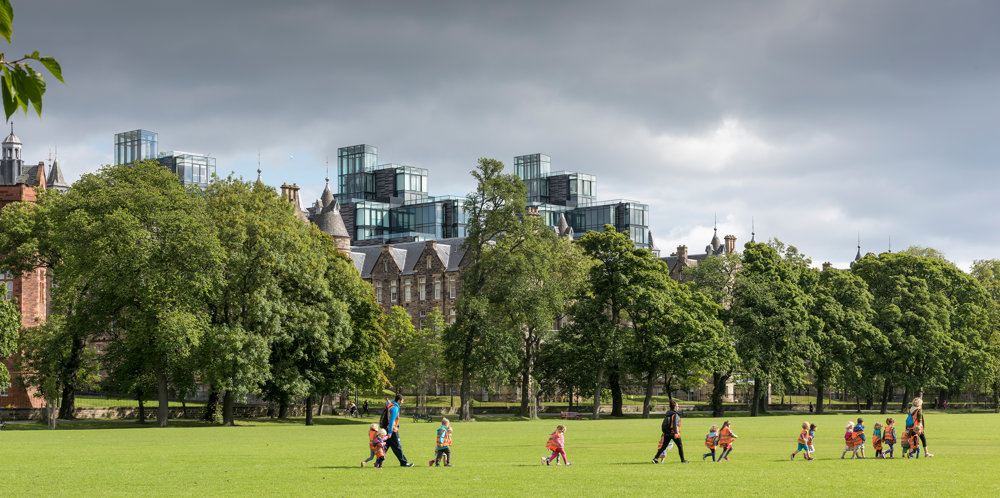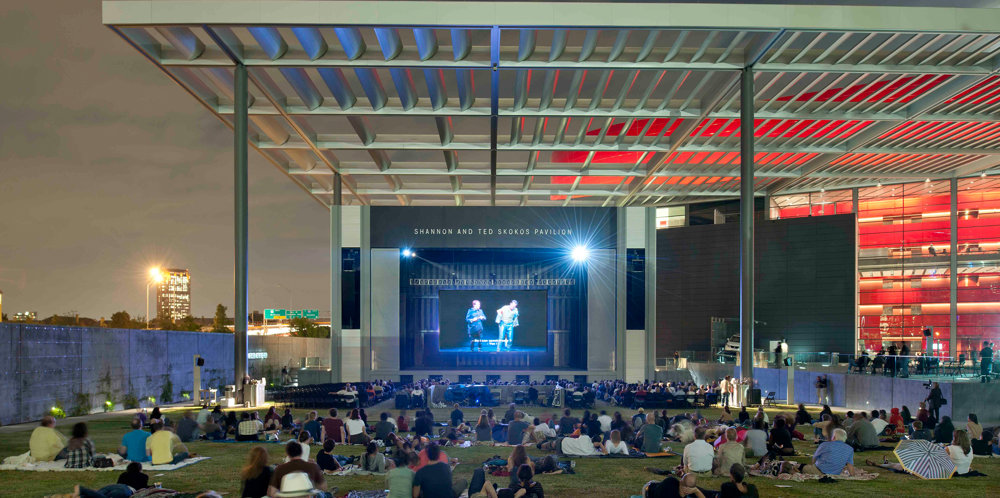Masdar City combines state-of-the-art technologies with the planning principles of traditional Arab settlements to create a desert community that aims to be carbon neutral and zero waste. The 640-hectare project is a key component of the Masdar Initiative, established by the government of Abu Dhabi to advance the development of renewable energy and clean-technology solutions for a life beyond oil. The city will become a centre for the advancement of new ideas for energy production, with the ambition of attracting the highest levels of expertise. Knowledge gained here has already aided the development of Abu Dhabi’s ‘Estidama’ rating system for sustainable building.
A mixed-use, low-rise, high-density development, Masdar City includes the headquarters for the International Renewable Energy Agency and the recently completed Masdar Institute. Strategically located for Abu Dhabi’s transport infrastructure, Masdar is linked to neighbouring communities and the international airport by existing road and rail routes. The city itself will be the first modern community in the world to operate without fossil-fuelled vehicles at street level. With a maximum distance of 200 metres to the nearest rapid transport links and amenities, the city is designed to encourage walking, while its shaded streets and courtyards offer an attractive pedestrian environment, sheltered from climatic extremes. The land surrounding the city will contain wind and photovoltaic farms, research fields and plantations, allowing the community to be entirely energy self-sufficient.
The development is divided into two sectors, bridged by a linear park, and is being constructed in phases, beginning with the larger sector. The masterplan is designed to be highly flexible, to allow it to benefit from emergent technologies and to respond to lessons learnt during the implementation of the initial phases. Expansion has been anticipated from the outset, allowing for growth while avoiding the sprawl that besets so many cities. While, Masdar’s design represents a specific response to its location and climate, the underlying principles are applicable anywhere the world. In that sense it offers a blueprint for the sustainable city of the future.









